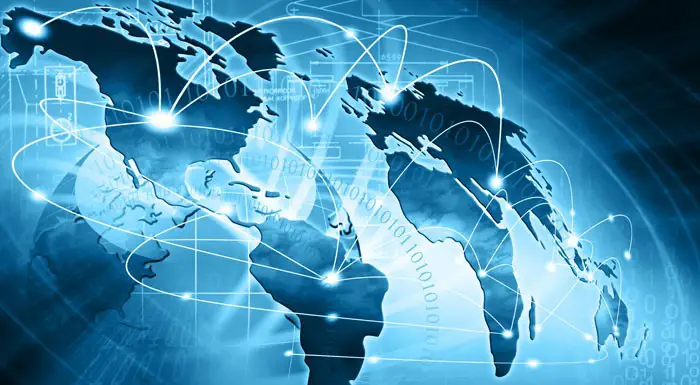We get connected to the whole world from the place where you stay. You can get connected through different sources, such as Computers, mobile phones, sites, etc. Connections are used for communication, work, imports, and exports, etc. The main source for this connection is Network. All of these devices get connected to each other using cables, or wireless network, or signals, etc. The message you send will be divided into packets and sent to the destination on the network. The way it is sent and the functions applied on the message are controlled by some layers on the Network. There are seven Network layers as such.

To implement and arrange such protocols and functions into seven layers, there is a networking framework called OSI, i.e., The Open System Interconnection (OSI). Here you will understand how these seven layers are placed and how do they interact with each other.
Each layer can access the next above layer. The control passes from one layer to the other over the channel and then back again in the hierarchy.
The OSI Model Layers
OSI models arrange those seven layers and the tasks of the messaging are distributed across the layers. Each layer has its own responsibilities. They all follow some protocols and functions. The packet passes through each and every layer. These are the seven layers.

The First Layer is the Physical layer:
At a mechanical and the electrical level, radio signal or light is conveyed by the layer 1 of the OSI Model through the network. The hardware required for sending a message and receiving it is provided by this layer. Hardware includes routers, cables, systems, any physical aspect of the network. The protocols of this layer with physical layer components are ATM, RS232, Fast Ethernet.
The Second layer is the Data Link layer:
Decoding and encoding of data packets into bits takes place in the second layer of OSI Model. Protocol management and knowledge are furnished here. Frame synchronization, flow control, errors in the physical layer is handled here.
The third layer is the Network layer:
Functionalities such as the creation of logical paths, routing and switching technologies, which are used for data transmission from node to node, virtual circuits, etc. are controlled and handled here.
The Fourth layer is the Transport layer:
Transparent data transfer between the hosts or end systems is provided by this fourth layer of the OSI Model, Layer 4. Flow control and end-to-end error recovery, complete data transfer is ensured by this layer.
The Fifth layer is the Session layer:
Connections among applications are managed and terminated by this layer. The session layer arranges exchanges, terminates, and coordinates the data among different applications on the end. Connection and session coordination are handled by this layer.
The Sixth layer is the Presentation layer:
Here the format of the data is translated for supporting the differences in the data representation and vice versa. Here data is transformed in such a way that it can be accepted by the Application layer.
The Seventh layer is the Application Layer:
End-user and application processes are supported by this seventh layer of the OSI Model. Privacy, Quality of service, communication partners, user authentication and any constraints are identified here by the network.


















